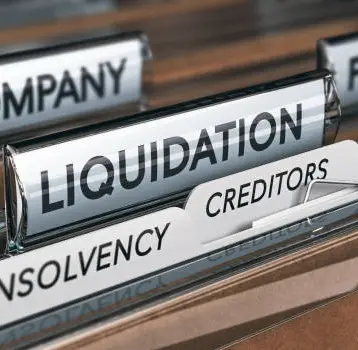Weather events over the past few years have seemed nearly Biblical in scope: wildfires, torrential rainfall, mudslides and floods, increasingly violent tornadoes and hurricanes, extreme cold and warm weather, shifting weather patterns, erosion of ocean shorelines, glacial melt, and record breaking insured and uninsured losses. There is no getting away from it, the weather is having an impact on all aspects of life all over the planet.
While all of this seems like the making of a dramatic and fictitious Hollywood film, it is sadly reality, and has been for the past few years. In other words, the worst-case scenario projections of climatologists and meteorologists are happening in real time, to real people.
“The steady year-over-year increase in the frequency of severe weather events is fueling a significant and growing global insurance protection gap, a gap that is most pronounced in poor, less developed nations,” according to insurance executive Neil Mitchell. He explains that the only way that this gap can be closed is if people, communities, and businesses are educated about its costs and consequences. Further, the public and private sector needs to build risk mitigating and resilient infrastructure as well as risk transfer systems to better protect and financially restore people, communities, and commerce.
“Warmer air holds more moisture and as result we are experiencing torrential rains that result in massive mudslides, floods, sewer backups. Our natural and man-made infrastructure has not been designed to consume and disperse the volume of water arising from torrential rainfall,” he said. “Gone are the days of those misty rain days – it is now either an all-out deluge or nothing.”
The main questions are: Where are the greatest needs? What can be done?
Updated flood maps and better insurance are becoming critical in places that have rarely had flooding before
The 2018 destruction of communities in New Brunswick and British Columbia left families in emotional and physical turmoil and without their homes. The U.S. has also been facing a crippling onslaught of flood events.
The stark reality is that homes are being destroyed, lives are being threatened and lost, and businesses and communities are being wiped out in places that have never seen flooding on such a scale.
“Many victims of recent natural catastrophes do not have flood insurance, which is a separate coverage from a typical homeowner’s insurance policy, because they weren’t aware that they needed it or cannot afford to pay for it,” said Mitchell.
According to a CBC article, government officials are racing to update flooding maps and zoning laws in order to keep up with rapidly changing weather conditions.
As Kentucky residents look for the hundreds of people still missing while mourning the deceased, they logically have a grim outlook of how, when, and if the Bluegrass State can rebuild, or if residents can even survive the escalating climate crisis.
“The occurrence of the flash flooding—at night, when most people were asleep—proved to be a fatal ingredient in this devastating event,” Mitchell said. “Experts surmise the loss of life would have been far less if the deluge had occurred during the day, but extreme weather doesn’t possess such virtues of empathy and mercy. It operates on its time, not ours.”
Many in the impoverished communities hit the hardest did not have flood insurance. According to USA Today, some are requesting increased assistance, because they can’t afford to rebuild, and they can’t afford flood insurance at current rates.
What action plans should take place? Mitchell states:
- Up to date, in-depth mapping so people are educated and aware of their habitational flood risks. Home builders and realtors need to provide disclosures on flood risk including information on history of sewer back up claims. Does the home sit on land that is a reclaimed flood zone, like wetlands, lowlands, or former creek beds?
- Green corridors (inclusive of wetlands and farmlands) established in and around urban and suburban communities to absorb and buffer those areas from torrential wet weather events.
- New residential, commercial, and industrial developments should be subject to significant setbacks to ensure a green (absorbent) buffer between development and waterways (creeks, rivers, ponds, lakes).
- Government and private sector insurers/reinsurers need to create insurance solutions that will financially restore people, communities, and business when the worst occurs. With a goal of making flood insurance affordable for homeowners particularly for those at, or near and below the poverty line.
- Government entities need to implement updated land use planning measures to reduce the probability of flooding on land which is prone to such events. There needs to be a move to protect significant tracts of agricultural land, green spaces, and wetlands from urban and suburban development. In other words: eliminate sprawl and increase density.
The human spirit is indomitable when there is hope
Communities hit by disaster demonstrate a common trait: friends and neighbors, strangers even, come together and help those in desperate need. It is the way humanity works. When others are downtrodden and struggling, we find ways to assist. Sometimes in small ways, but when those are all added up, they make a big difference to people who have lost everything.
“When bad weather strikes, the suffering is real and painful. What we must do, collectively and in the insurance industry specifically, is provide hope and real solutions to people who have little if anything left in the aftermath of these terrible events,” Mitchell says.
He explains that these events present a unique opportunity for the insurance industry to live up to its noble calling and purpose and provide real solutions: to reduce the frequency and severity of these events, build resilient communities and risk transfer systems that financially restore the lives, communities and businesses that have lost everything.
“The insurance industry can play a leadership role in educating society about these severe weather risks and influence people, communities, and businesses to invest in risk resilient infrastructure, create price incentives to reduce carbon outputs and develop risk mitigation and transfer solutions to protect and restore humanity when these terrible events occur,” he says. “The only way we survive the effects of severe weather events is through collaboration and innovation.”
He notes that despite the devastation inflicted by these terrible weather occurrences, these incidents drive home the fact that we are all literally in this together: “There is no ‘us’ versus ‘them.’”
This needs to be a global effort with everyone collaborating and contributing, he explains, to better protect and restore our planet and it’s people in the face of extreme weather events.










